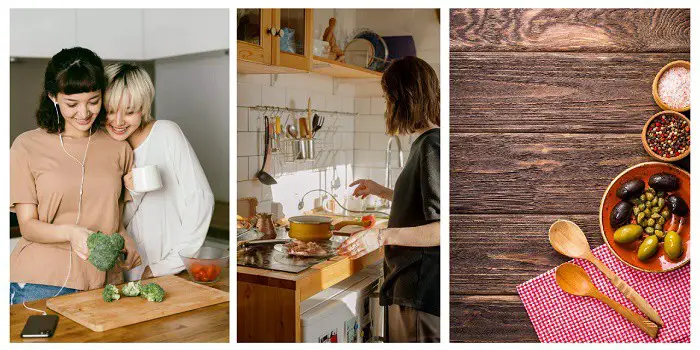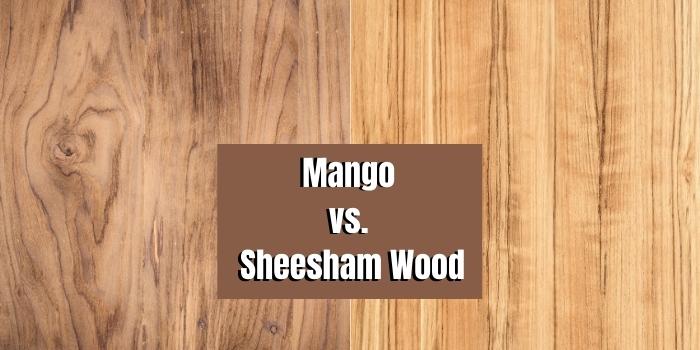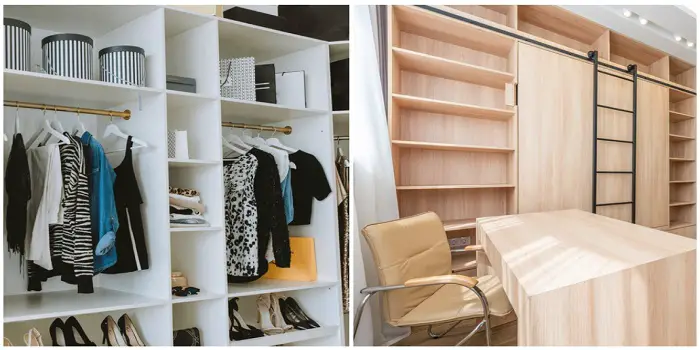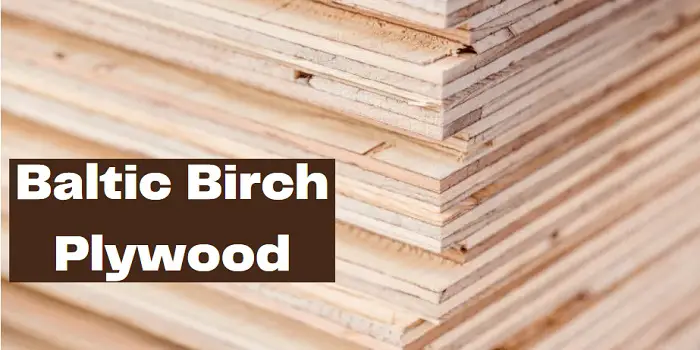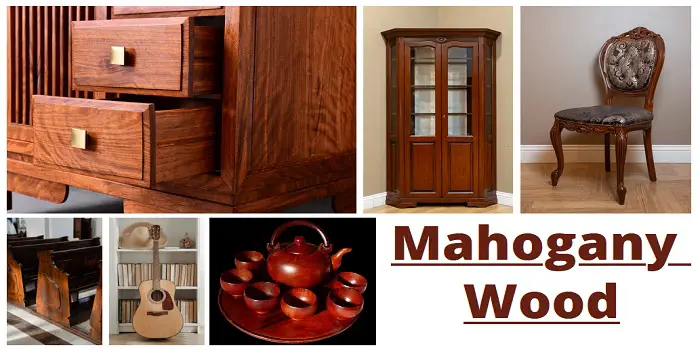
Mahogany wood is an exceptionally durable hardwood that is eagerly sought after for its exotic look that becomes deeper and richer over time.
As a result, mahogany is used in a wide variety of situations, from ornate wood carvings to cabinetry to floors and even to musical instruments, where it creates beautiful violins and guitars.
What’s interesting about the wood is that marketing has taken over the term Mahogany. We now have a range of unrelated trees falling under the Mahogany name and being sold as such.
When choosing the wood – it’s important to understand the different Mahogany woods, their characteristics, how to best use each different type, and how to ensure you’re getting genuine Mahogany.
Read along to get all of the information you need on Mahogany Wood for whatever project you have waiting for it.
What Does Mahogany Look Like?
Mahogany wood is highly valued for its rich reddish-brown hue, straight and uniform grain, and natural luster, which deepens over time, acquiring a distinctive reddish sheen when polished.
What does a mahogony tree look like?
A mature mahogany tree exudes grandeur and resilience, standing tall and wide with a well-balanced structure.
Its combination of dark bark, rich green foliage, and a symmetrical canopy makes it an attractive tree for both commercial and ornamental purposes.
Whether in a dense forest or a cultivated plantation, mahogany trees command attention with their elegant and sturdy presence.
Trunk and Bark
The trunk of a mahogany tree is tall, straight, and robust, often growing to over 200 feet (61 meters) in height in natural forests.
It has a relatively smooth and cylindrical form, making it ideal for high-quality timber. The bark is dark brown, sometimes with a flaky texture, and provides protection against environmental stress.
Canopy and Leaves
Mahogany trees boast a broad, rounded canopy, which offers ample shade.
The leaves are large, glossy, and dark green, with each leaf consisting of multiple leaflets arranged in a feather-like pattern (pinnate structure). This arrangement gives the tree a dense and lush appearance, adding to its visual appeal.
Flowers and Fruits
During its flowering season, the mahogany tree produces small, yellow-green flowers that appear in clusters. These flowers are subtle but play a crucial role in the tree’s reproduction.
After pollination, the tree develops woody seed capsules, which contain winged seeds that are dispersed by the wind. These capsules eventually split open to release the seeds, ensuring natural propagation.
Different Types and Species of Mahogany
Genuine Mahogany is still available through Honduran Mahogany suppliers, and many consider African mahogany as genuine as well.
However, there are a wide range of other trees being marketed as Mahogany and may come with the same price but not the same features as genuine Mahogany.
They’re certainly not, and aside from a similar color, the characteristics can be wildly different.
Check where your wood comes from, as that will be your first sign of whether you’re getting genuine Mahogany or not.
1- Cuban Mahogany
Historically this is what people talked about when they discussed Mahogany.
So, you need to be wary of what exactly you’re buying and not just assume that Mahogany is all the same type of wood.
It was used extensively throughout Europe and the United States for cabinetry, furniture, and a variety of other uses.
However, overuse has depleted the supply, with Cuba no longer exporting it and other locations having minimal supply as well, so it’s very rare to see except in old pieces that may get reused.
Uses
Not a lot of Cuban Mahogany is going to be used anymore; however, you’ll find it in older furniture, cabinetry, veneers, carvings, and even musical instruments.
It’s also historically been used in boat building.
Color Texture & Grain
Cuban Mahogany heartwood varies in color, but it is generally pale pinkish-brown to darker reddish-brown.
The denser and older the wood, the darker it becomes.
Cuban Mahogany has a large range of different grains you’ll find; it can be wavy or irregular, interlocked, or even straight. It’s got a medium and uniform texture and has a reasonable natural luster to it.
Cost, Availability & Durability
Cuban Mahogany is extremely expensive due to the rarity of the product.
Therefore, you are unlikely to see it for sale, and if you do happen to, you’ll recognize it based on the price it’s selling for.
Extremely rare, you’re unlikely to find Cuban Mohogany at Home Depot for your flooring needs.
If it does become available, it’s extremely expensive, simply because of its rarity.
This wood is moderate to very durable depending on how it was grown and how dense the wood is.
Older-growth trees produce much more durable wood, while plantation-grown trees are only moderately durable.
It’s resistant to termites but still vulnerable to many other insects.
Cuban Mahogany
| Scientific Name: | Swietenia mahogani |
| Tree Size: | 65-100 ft (20-30 m) tall 3-5 ft (1.0-1.5 m) trunk diameter |
| Janka Hardness: | 930 lbf (4,120 N) |
| Odor: | No smell |
| Specific Gravity (Basic, 12% MC): | .53, .60 |
| Common Uses: | Furniture and cabinetry |
2- Honduran Mahogany
Honduran Mahogany is what’s left of genuine Mahogany now that Cuban Mahogany is not available.
However, due to the exploitation of wood, it’s now becoming more challenging to get outside of the countries it’s being grown in.
Uses
Depending on what country you’re in, you can still find Honduran Mahogany, so it’s used extensively in furniture, cabinetry, turned items, and carving.
You’ll also find musical instruments like guitars made out of it, which may still be used in boatbuilding.
Color Texture & Grain
You’ll find Honduran Mahogany in a variety of colors that you see in most Mahogany; it can be pinkish-brown to a dark red-brown color.
As with almost every Mohogany variety, it will darken more as it ages.
Honduran Mahogany has an almost identical variety of texture and grain as you find in Cuban Mahogany.
You’ll discover irregular or wavy, interlocked, and straight-grain options. It has a medium and uniform texture with a slight natural luster to it.
Pricing, Availability & Durability
You can still find Honduran Mahogany, even though there are export restrictions in some places.
You’ll find lumber and veneers readily available from plantations, which does have the downside of being lighter colors and less durable than old-growth Honduran Mahogany.
Honduran Mahogany is a relatively durable and hardy wood; depending on where and how it was grown, it’s moderate to very durable.
Similar to Cuban Mahogany, it’s resistant to termites, but other insects can be a problem.
Honduran Mahogany
| Scientific Name: | Swietenia macrophylla |
| Tree Size: | 150-200 ft (46-60 m) tall 3-6 ft (1-2 m) trunk diameter |
| Janka Hardness: | 900 lbf (4,020 N) |
| Odor: | No smell |
| Specific Gravity (Basic, 12% MC) | 0.52, 0.59 |
| Common Uses: | Veneer, musical instruments, and boatbuilding |
3- African Mahogany
African Mahogany refers to a number of different trees, all from Africa. It’s the most widely available substitute for genuine Mahogany.
While it’s a very close comparison, it lacks some of the deeper color and durability that you get with Cuban and Honduran Mahogany.
Uses
African Mahogany is exceptionally easy to work with, so it can be used in an extensive range of different areas.
You’ll find veneers available, plywood, and turned items, as well as in the construction of furniture and even for boatbuilding.
It can be used for general construction, but it’s generally only used for interior trim and outward-facing uses.
Color, Texture & Grain
African Mahogany has a similar color to Cuban and Honduran, though it lacks some of the darker shades.
You’ll find it in very pale pink to a deep red-brown. You may even find streaks of varying colors through the grain.
As the wood ages, it can become darker, though not as dark as genuine Mahogany.
African Mahogany has varying grains, from straight to interlocked. It has a medium to coarse texture.
Pricing, Availability, & Durability
African Mahogany is widely available and is the biggest substitute for genuine Mahogany on the market today.
You’ll get a massive variety of sizes and types available. It’s an inexpensive imported wood.
It’s only a moderately durable wood and in some cases, has pretty poor resistance to insects and marine borers, which can also determine what it’s good to be used for.
African Mahogany
| Scientific Name: | Khaya spp. (Khaya anthotheca K. grandifoliola, K. ivorensis K. senegalensis) |
| Tree Size: | 100-130 ft (30-40 m) tall 3-5 ft (1-1.5 m) trunk diameter |
| Janka Hardness: | 1,070 lbf (4,760 N) |
| Odor: | No smell |
| Specific Gravity (Basic, 12% MC): | .52, .64 |
| Common Uses: | Furniture, boatbuilding, and interior trim |
4- Mountain Mahogany
Mountain Mahogany is a highly dense wood that is not often available for commercial sale, at least in bulk.
Due to how dense it is, how difficult it is to harvest, and tough to work with, it doesn’t make for a good product for widescale use.
Some hobbyist woodworkers like to use it for specialty projects, and people with Santos Mahogany growing near them may simply use it for firewood if they can chop through the tree.
Uses
Most people don’t use Mountain Mahogany.
It’s challenging to work with, so it’s mainly for small projects for people who want incredibly dense and durable wood.
Historically it’s been used by native peoples to turn into tools for digging and even arrowheads on their weapons.
Color, Texture & Grain
Mountain Mahogany comes in the standard reddish-brown that you expect from most woods claiming to be Mahogany.
However, you will find some of the sapwood to be a paler yellow or even pink color.
Similar to many of these woods on the list, as the wood ages, it becomes darker.
Mountain Mahogany has a very fine texture and even grain. If you happen to use it, then you’ll find it has an excellent natural luster.
Pricing, Availability & Durability
Rarely available in any commercial capacity due to it being hard to harvest.
You would need to get it yourself, or you may see it available on rare occasions though it will be expensive compared to other domestic wood.
This wood is exceptionally durable, hardy, and strong.
Mountain Mahogany
| Scientific Name: | Cercocarpus spp. |
| Tree Size: | 10-20 ft (3-6 m) tall 1 ft (.3 m) trunk diameter |
| Janka Hardness: | 3,200 lbf (14,230 N) |
| Odor: | No smell |
| Specific Gravity (Basic, 12% MC): | .93, 1.11 |
| Common Uses: | Firewood and turned objects |
5- Santos Mahogany
Santos Mahogany is one of the pretenders in the Mahogany world.
While it does look like genuine Mahogany, it is a much dense and stronger wood than you’d expect with mahogany, and it’s harder to work with.
Uses
It’s used in many familiar places, such as flooring, furniture, interior trim, and even general construction.
What’s interesting about this wood is that it’s also used to make ingredients for perfume.
So, if you cut or work with this wood, you’ll notice a spicey scent that comes from it.
Color, Texture & Grain
Santos Mahogany comes in a wide variety of colors which makes it very appealing to use.
For example, you’ll find light golden brown all the way to a darker purple-red or even burgundy color.
As the wood ages, it moves toward darker red and purple colors.
It has an interlocked grain with a medium to fine texture.
It has a natural luster that comes out when used for flooring and furniture construction.
Pricing, Availability & Durability
Santos Mahogany is available worldwide with pricing in the mid-range of imported woods used for flooring.
It’s a very durable wood due to its resistance to decay, though it isn’t totally resistant to insect attacks, much like other Mahogany-type woods.
Santos Mahogany
| Scientific Name: | Myroxylon balsamum |
| Tree Size: | 65-100 ft (20-30 m) tall 2-3 ft (.6-1.0 m) trunk diameter |
| Janka Hardness: | 2,400 lbf (10,680 N) |
| Odor: | It has a distinctive spicy scent when being worked |
| Specific Gravity (Basic, 12% MC): | .74, .91 |
| Common Uses: | Flooring and interior trim |
6- Swamp Mahogany
Swamp Mahogany is a tree from Australia though it’s now being grown worldwide, especially in warmer climates.
It’s incredibly hardy and matures quickly, making it ideal for harvesting quickly.
Uses
While Swamp Mahogany can be used for firewood or general construction, its real value lies in constructing piers and other water-based structures.
Because it’s grown in swamps and around water, it is highly resistant to issues caused by water and also marine borers, though it still is susceptible to airborne insects.
You would not use this world for furniture or much else besides construction.
Color, Texture & Grain
It has a reddish-brown color which is partially why it gets lumped into the Mahogany category.
The color is also helpful for outdoor construction projects as you won’t need to paint it, and it’s more appealing than pine and other timbers.
It’s a highly coarse texture, and the grain is interlocked, and sometimes there are light and dark stripes running through it.
Pricing, Availability & Durability
Moderately priced and available throughout much of the world, it’s been exported and planted in various warm climates due to its usefulness in many construction projects.
It is exceptionally durable, primarily when used in the construction of water-based structures.
In addition, it’s resistant to marine life that tries to bore into wood, so it is a much better option than many other kinds of wood.
Swamp Mahogany
| Scientific Name: | Eucalyptus robusta |
| Tree Size: | 65-100 ft (20-30 m) tall 2-3 ft (.6-1.0 m) trunk diameter |
| Janka Hardness: | 1,250 lbf (5,540 N) |
| Odor: | No smell |
| Specific Gravity (Basic, 12% MC): | .60, .79 |
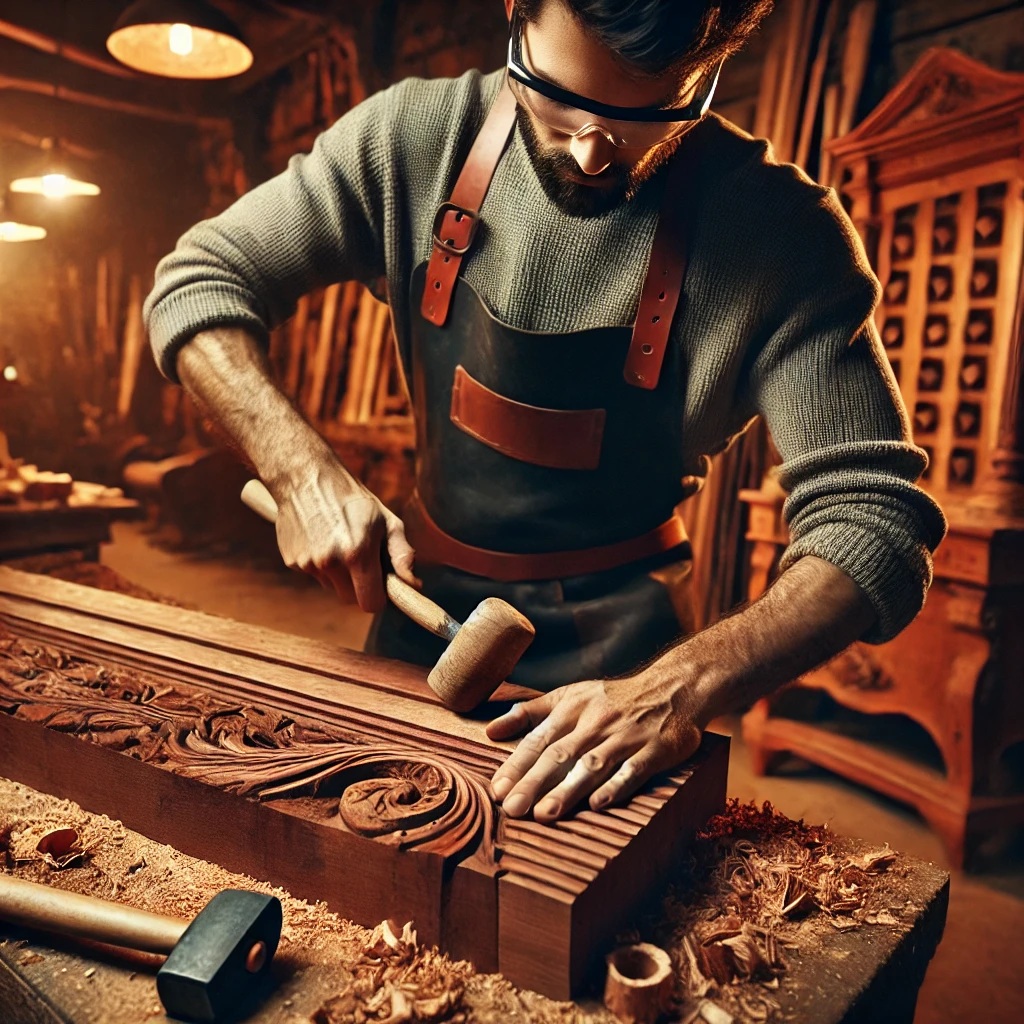
A Bit of History about Mahogany – Things to Know
Genuine Mahogany has been used extensively since the 18th century in Europe and the United States.
The word “mahogany” was previously used in the small islands near the West Indies.
Later the wood of the tree was known as “Acajou” and “Coaba” in different territories and cultures.
Presently, it’s been favored due to its range of deep rich colors and ease of working with it.
It’s been used in a wide variety of furniture, boats, houses, and anything else you can think of that wants durable and beautiful wood.
You find mahogany in guitars and even ornate wood carvings.
Unfortunately, due to overuse, Cuban Mahogany has been extremely rare for some time, and Honduran Mahogany is on its way to a similar fate.
Much of the Honduran Mahogany available today comes from plantations, which are known to have less dense and durable wood and weaker colors.
This is partially due to how it’s planted and how quickly it’s being harvested due to demand.
This has left a gap in the market, but not in demand for Mahogany, and that’s where African Mahogany comes in.
African Mahogany has remarkably similar qualities as genuine Mahogany, though it doesn’t have quite the same richness in color and is a little harder to work with.
We can see from all of this that what was genuine Mahogany and all the benefits that came with it are no longer available, and we’re just using the Mahogany brand to sell similar but not quite as good products.
Related FAQs
Why is mahogany so expensive?
Mahogany is expensive because of its rarity, quality, and limited supply. True mahogany trees grow slowly and are found mainly in tropical regions, making the wood harder to source.
It’s prized for its rich color, fine grain, strength, and resistance to warping or pests, making it ideal for luxury furniture, boats, and musical instruments. Overharvesting and strict environmental regulations have also reduced its availability, further driving up prices.
Additionally, the craftsmanship associated with mahogany products adds to the cost, as the wood’s beauty and durability make it a long-lasting and prestigious material for high-end applications.
How to tell if it’s a real mahogany wood?
You can identify mahogany wood by its distinct color, grain, and texture. True mahogany has a rich reddish-brown to deep russet hue that darkens with age. The grain is usually straight, fine, and even, with a natural luster and a smooth, silky feel.
When viewed under light, it often shows a chatoyancy or shimmering effect. The wood is moderately heavy and dense, yet easy to carve or polish.
Unlike cheaper imitations, genuine mahogany doesn’t have strong odor or visible pores filled with resin. Its uniform texture and warm tone make it stand out from other hardwoods like cherry or teak.
What are the other names for mahogany wood?
Mahogany wood is also known by several other names based on its origin and species. The most common ones include Honduran mahogany, Cuban mahogany, and Brazilian mahogany, which are true mahoganies from the Swietenia genus.
Other varieties, such as African mahogany (from the Khaya species) and Philippine mahogany or Lauan (from the Shorea species) are often marketed under the same name due to their similar appearance.
Among these, genuine mahogany specifically refers to Swietenia macrophylla, prized for its rich reddish-brown color, durability, and fine grain, making it a premium choice for furniture and decorative woodwork.
Many different trees from all over the world fall under the Mahogany brand now.
Some can be used in place of genuine mahogany, while others would be wildly inappropriate to use.
Most trees have similar features, such as color, grain, texture, and durability.
However, if you’re looking for genuine Mahogany or a similar product, you must look out for specific trees, such as Honduran or African Mahogany.

Hi, I am Mark Garner a professional carpenter, woodworker, and DIY painter. I live in the small city of Peoria, Arizona as a semi-retired woodworker. I have started this blog with a simple motive to help you with my wood experience in this sector. If you like to know more about what I love doing and how it all got started, you can check more about me here.

